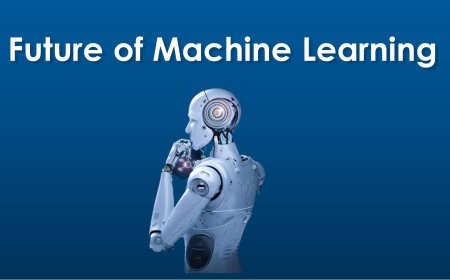How to Practice Machine Learning Through Projects
"Machine Learning Through Projects: A hands-on approach to learning machine learning concepts and techniques through practical project implementation."

Welcome to our comprehensive guide on practicing machine learning through projects. Machine learning is a rapidly evolving field that requires hands-on experience to master. Engaging in projects is a fantastic way to gain practical knowledge, apply theoretical concepts, and build a strong portfolio. This article will provide you with valuable tips and insights on how to effectively practice machine learning through projects.
Table of Contents
- Benefits of Project-based Learning
- Choosing the Right Project
- Selecting a Dataset
- Defining the Problem Statement
- Selecting the Methodology
- Implementing the Solution
- Evaluating and Iterating
- Documenting Your Work
- Sharing and Showcasing
Practicing machine learning through projects is an effective way to bridge the gap between theoretical knowledge and real-world applications. By working on projects, you not only enhance your technical skills but also gain experience in problem-solving, data preprocessing, model selection, and evaluation. Additionally, projects allow you to showcase your abilities to potential employers and contribute to the machine learning community.
Benefits of Project-based Learning
Engaging in project-based learning in machine learning offers several advantages:
- Hands-on Experience: Projects provide practical experience in solving real-world problems using machine learning techniques.
- Application of Theory: Projects help you apply theoretical concepts learned in courses or tutorials to real data and scenarios.
- Portfolio Development: Projects allow you to build a strong portfolio of completed projects that demonstrate your skills and expertise.
- Problem-solving Skills: Projects challenge you to identify and solve complex problems, improving your critical thinking and analytical abilities.
- Domain Knowledge: Through projects, you can explore specific domains of interest and gain domain-specific knowledge and insights.
Choosing the Right Project
When selecting a project, consider the following factors:
- Interest and Motivation: Choose a project that aligns with your interests and goals to stay motivated throughout the process.
- Relevance: Select a project that is relevant to your career aspirations or the specific machine learning techniques you want to practice.
- Complexity: Start with projects that match your skill level, gradually increasing the complexity as you gain experience.
- Availability of Data: Ensure that you have access to a suitable dataset for your project, either from public sources or by collecting your own data.
Selecting a Dataset
The choice of dataset is crucial for a machine learning project. Look for datasets that are relevant to your project and provide enough variability and size to train and evaluate your models effectively. Popular platforms like Kaggle, UCI Machine Learning Repository, and OpenML offer a wide range of datasets across different domains.
Defining the Problem Statement
Clearly define the problem you want to solve with machine learning. Whether it's classification, regression, or clustering, a well-defined problem statement helps guide your project and set clear objectives. Understand the requirements, constraints, and desired outcomes to shape your approach.
Selecting the Methodology
Choose the appropriate machine learning methodology for your project. This could involve selecting algorithms, determining feature engineering techniques, and deciding on the model evaluation metrics. Consider the characteristics of your dataset and problem statement to make informed decisions.
Implementing the Solution
Implement the chosen methodology by building and training your machine learning models. Use programming languages and libraries such as Python, R, scikit-learn, TensorFlow, or PyTorch to develop your solution. Clean and preprocess the data, split it into training and testing sets, and iteratively train and evaluate your models.
Evaluating and Iterating
Evaluate the performance of your models using appropriate evaluation metrics. Analyze the results and iterate on your approach by fine-tuning hyperparameters, trying different algorithms, or incorporating additional features. This iterative process helps you refine your models and improve their accuracy and generalization.
Documenting Your Work
Documenting your project is essential for future reference and to showcase your work. Keep a record of your project's goals, methodologies, datasets, experiments, results, and conclusions. Documenting your code, including comments and explanations, ensures that others can understand and reproduce your work.
Sharing and Showcasing
Share your project with the machine learning community to receive feedback and gain visibility. You can create a GitHub repository, write a blog post, or participate in online forums and communities to share your findings, insights, and code. Sharing your projects not only contributes to the community but also establishes your credibility as a machine learning practitioner.
By following these guidelines, you can effectively practice machine learning through projects, gain valuable experience, and demonstrate your skills to potential employers or collaborators. Remember to choose projects that align with your interests, document your work thoroughly, and actively engage with the machine learning community to foster growth and learning.












































